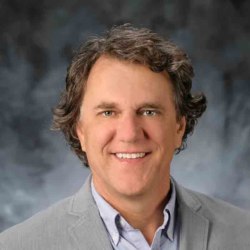Poll Shows Growing Opposition to Unions
Public sector unions are hugely powerful in California and the nation. In California, about 17 percent of all employees work for government at the local, state or federal levels, and about 14 percent of all employees work for state or local governments.
Currently, about 4 million Californians — just more than 10 percent of all Californians — are members of government-defined benefit pension systems. About 2 million Californians work for state and local governments; there are currently about 1 million state and local government pension recipients; and inactive members and families comprise the balance.
Government pensions are unsustainable. This is the central government truth of our time. Government does not exist to provide pensions to former employees. It exists to provide services to the people. Many government jurisdictions are on a path to spend half or more of their expenditures on pensions for past employees in the coming decade.
California public employees vote, as do their spouses and other family members and friends. It will be a hard battle to persuade electoral majorities to support the reforms that are necessary to preserve decent and reasonable local government services at a reasonably low cost.
Poll Results
The Reason Foundation has recently teamed with the Santa Barbara-based Arthur N. Rupe Foundation to produce a series of polls — the Reason-Rupe Polls — that will go into issues of public policy and what the public thinks of them in depth.
The first poll was released recently. It has interesting findings with respect to the changing public attitudes towards government unions and the increasing political division between public and private sector workers.
As of this spring, a small minority of Americans oppose laws that would curtail public sector bargaining rights; 43 percent of Americans oppose such laws compared to 36 percent who favor them. Importantly, this is an issue on which Americans are polarizing, since the proportions of Americans who strongly oppose and strongly favor these laws are each substantially larger than the percentages who merely somewhat oppose and somewhat favor these laws.
It is also the case that by a small plurality, 40 to 36 percent, Americans believe that public sector unions are more helpful than harmful to society, but that’s pretty faint praise.
Division Between Public, Union Members
What is perhaps most interesting about each of these data is the division in them between public sector and private sector employees, which the Reason-Rupe Poll is the first to highlight. While 45 percent of private sector workers favor curtailing public sector bargaining rights compared to 37.5 percent who oppose this course, 61.5 percent of public sector workers oppose this course compared to 26 percent who favor it.
Moreover, whereas 47 percent of private employees think that public sector unions are more harmful than helpful, compared to 34 percent who believe they are more helpful than harmful, 61 percent of public employees believe that public sector unions are more helpful than harmful compared to a mere 21 percent who feel the other way.
There is an emerging political division in American society between public and private sector workers. The key political question is: Will new political forces emerge that bring Democrats who recognize the importance of paying public sector workers less together with Republicans and Independents who support this same course? The Reason-Rupe Poll helps greater understanding of these issues.
Lanny Ebenstein is president of the California Center for Public Policy.
